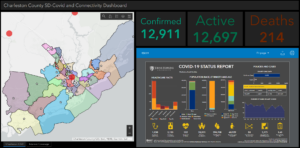School Districts typically face many challenges when starting a new school year. In 2020, they face an additional one, corona virus and the uncertainty this brings to everyone, from the student body, to the parents, as well as instructors. School Districts across the US and the world are now debating whether or not they will be able to adequately plan and adjust to a hybrid model, online only or fully re-open. In a study by Harvard Global Health Institute, they take a closer look at where the virus is, and isn’t, under control. Based on this study, the vast majority of US states and counties, are not ready to fully re-open.
In summary, the “analysis considers two main things: the rate of new infections in a county and the county’s testing capabilities. [Using] guidelines from the Harvard Global Health Institute, which proposed a variety of ways to open schools as long as the county has fewer than 25 cases of COVID-19 per 100,000 people. [As well as] the World Health Organization’s proposal to open only if fewer than 5 percent of all those who are tested for the virus over a two-week period actually have it.”
This poses a very important question: How do school districts create a plan to make sure that students are safe while also guaranteeing all students have access to education that was previously available? Unfortunately, many school districts do not have the infrastructure and the technological resources to make sure that every student has access to online courses. For more information on this, see the following map Davis Demographics put together on Internet Access in the US. For this reason, many districts are taking a hybrid approach to reopening their schools.
A hybrid model would mean that students would have courses online as well as face-to-face with some restrictions. The best way to plan for such a change, is at minimum to take into consideration where students reside, and this is where geocoding comes into play. Having a clear understanding of where students from all the different grade configurations reside, is key in order to plan for facilities, adjust capacities, etc. However, in School Year 2020, it is absolutely necessary given the threat we face with this pandemic. In addition to geocoding, online tools such as dashboards can provide more information and a better user experience for school administrators, parents, teachers, and students. Please see an example built for Charleston CSD, South Carolina.

Access: Charleston School District Covid Dashboard
This example uses information from John Hopkins University and gives the school district insight on confirmed and active cases, as well as, deaths, number of staff beds, and number of cases in the last 14 days. Based on this and school information, the district can make substantiated decisions.


